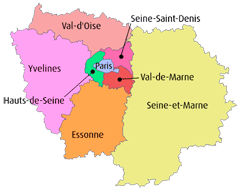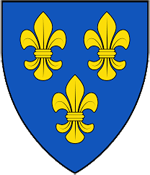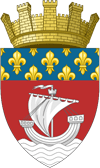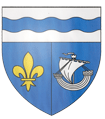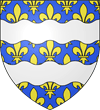|
|
|
|
 |
Travelling in Paris and its
Environments |
|
The Paris Métro underground system is the
cheapest and, in principle, the best way to travel around Paris. However, it does
have to be said that it is not really suitable to those who
cannot manage stairs, who are physically compromised in some
way, or who are carrying a large amount of luggage, as I
have discovered that help is rarely, if ever, at hand.
Weekly
passes are available but these are expensive unless you are
travelling a good deal on the Métro; if you are making,
say, one journey there and back in a day, it is cheaper to pay
for each journey separately.
There are 16 lines, numbered 1 - 14 (you didn't expect it to be
logical, did you?) with two lines 3 bis and 7 bis (in English,
this would be 3b and 7b) which began as branches of 3 and 7. These
latter are actually now separate lines but the Métro is labeled
as if they were absent! The lines are both numbered and colour
coded and the direction of travel is indicated by the terminus
of that direction.
I have indicated at the heading of the various churches and
museums the Métro station to head for; there are interchanges at
various stations (about a fifth of all stations) between the
several lines of the system. I do find the Métro much easier to
use than the London Underground, even though I am less familiar
with the system and,of course, the language, as there are fewer
branches and side tracks. Tickets are a flat rate unless you
travel outside the city.
|
|
This was the
first military hospital in France, being founded by
Louis XIV and completed in 1675. A soldiers' church was
already on the site but the King ordered that the Dome
Church be built among the existing buildings for his
exclusive use and the housing of royal tombs. This
latter expectation was never realized.
In 1841 King
Louis-Philippe decided to bring back Napoleon's remains
from St Helena, where he had lived at Longwood under 'house arrest'
from 1815 to 1821; his body was encased in six coffins
and finally placed in the crypt in 1861. (right-top) The
original grave site and his house on St Helena are
preserved by the French Government. Later, tombs of
Vauban (right-bottom),
Marshal Foch and others have turned the Dome Church into
a French military memorial. Napoleon's older brother,
Joseph Bonaparte, also has a monument in the church.
In his will Napoleon requested that his body might be
returned to France "to repose on the banks of the Seine
in the midst of the French people I have loved so much".
In the event of a refusal he wished to be buried in
Geranium Valley under the willow trees adjacent to the
little spring, whence his drinking water was carried
daily to Longwood. His funeral took place on May 9th
1821, conducted by Father Vignali. He was buried with
full military honours, the garrison, 3000 strong, lining
the route with arms reversed. General Monthlon asked
that the following inscription be engraved on the tomb
in French: 'Napoleon Born at Ajaccio August 15, 1569.
Died at St Helena May 5 1821.' The Governor declined,
insisting that Bonaparte be added so the French decided
to leave the stone bare. It is difficult to understand
the reason prompting Sir Hudson Lowe to reject this
simple inscription.
(information from Lina Knipe of the St Helena Tourist
Office)
This section will be expanded in due course |
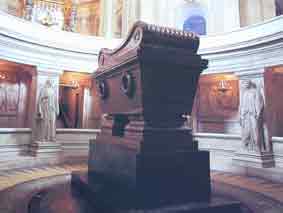 |
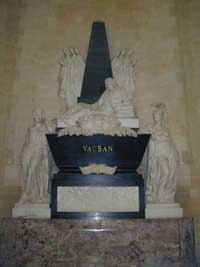 |
|
| |
|
The Panthéon |
|
The Panthéon began as a Christian basilica,
founded in 507 by the first Christian king of France, Clovis and
where he and his wife, Clotilde, were buried. St Geneviève was buried in
the basilica in 512. In
1744 King Louis XV was cured from a serious illness, it is said
by his invoking Saint Geneviève; he therefore made a vow to
dedicated a new basilica to the Saint, one rivaling Saint
Peter's in Rome. It was completed in 1790.
In 1791, the building was transformed into the National
Panthéon. It was returned to its function as a church twice
during the nineteenth century.
The main level houses several very large works, both sculptures
and wall paintings. Several of these are to the National
Convention, Christian heroes who left their mark on France
and the life of Saint Geneviève, and are not church monuments as
such. Those that do fit into this definition are shown below.
The crypt contains the burial vault containing the stone coffins
in various sections of Dignitaries of the Empire, Major authors,
Major figures in the fight for equality, Powerful voices who
gave life to democracy at the dawn of the Revolution, Those
showing courage and resistance during World War II, and
scientists.
With a few exceptions the stone coffins are of similar design so
a list of the burial will be added in due course. I have added a
few photographs of these coffins of those who would be most
familiar to the English reader.
Open daily. Admission charge.
 Place Monge 7 (Pink); Jussieu 7 (Pink), 10 (Yellow)
Place Monge 7 (Pink); Jussieu 7 (Pink), 10 (Yellow)
|
 |
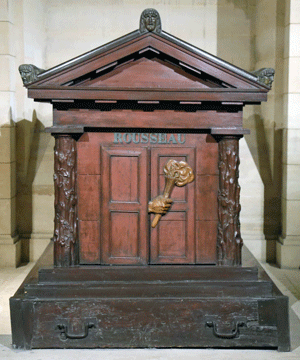 |
Jean-Jacques Rousseau (1712-1778)
Left: Rousseau's monument in the main level
by
Albert
Bartholomé (1907).
Above: Rousseau's grave in the crypt; his remains
were transferred here sixteen years after his death
Genevan philosopher, writer and composer; influenced the
Enlightenment in France and Europe as well as certain aspects of
the Revolution. |
 |
| Monument to
Denis
Diderot (1713-1784) and the Encyclpédists
by
Alphonse Camille Terroire (1913) Philosopher, art
critic and writer; prominent during the Enlightenment being the
co-founder, chief editor and contributor to the
Encyclopédie, a systematic dictionary of science, the
arts and works in accordance with the thoughts of the
Enlightenment. |
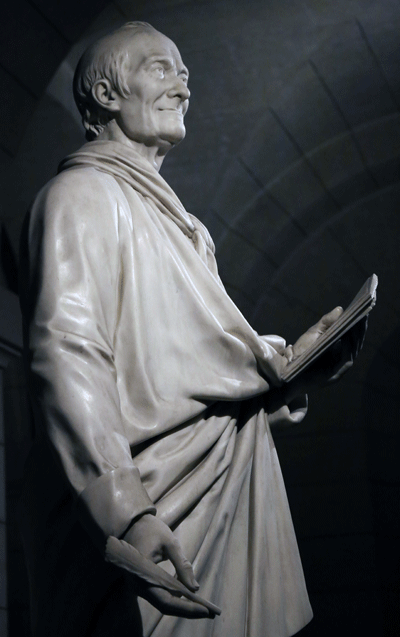 |
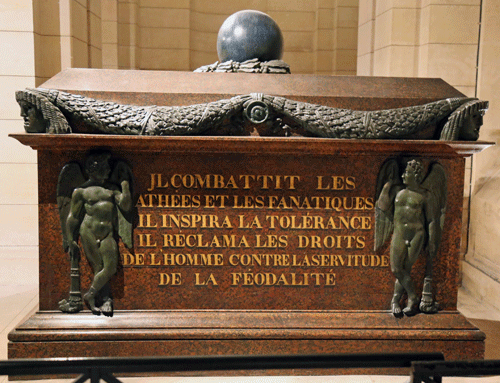 |
 |
François-Marie
Arouet ('Voltaire')
(1694-1778)
Left, above and right: Voltaire's monument and tomb,
both in the crypt.
Prolific writer, historian an philosopher of the French
Enlightenment, famous for his wit, attacks on the church and his
advocacy of freedom of religion, speech and civil liberties. |
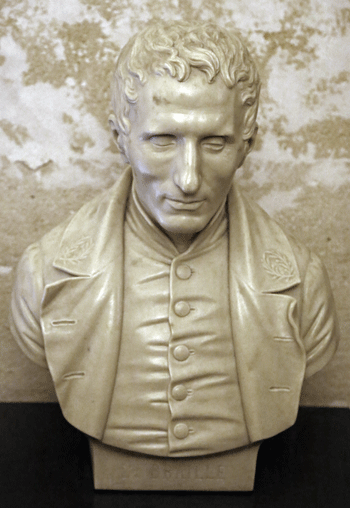 |
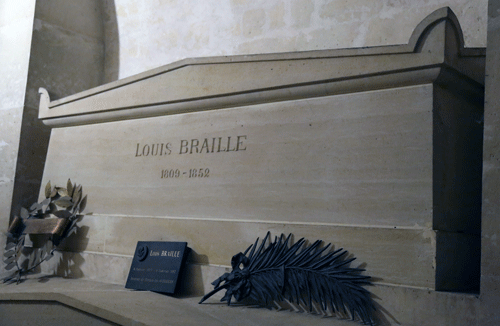 |
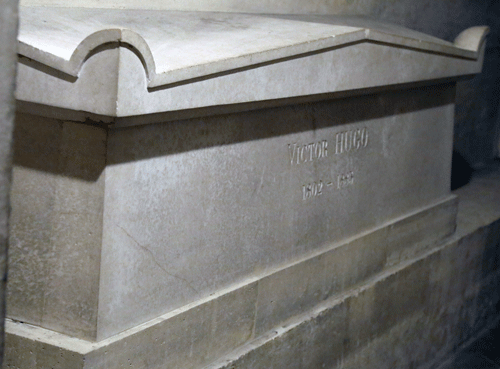 |
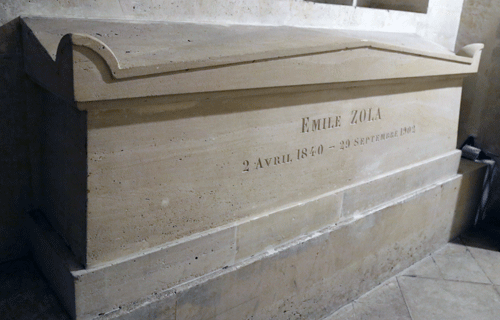 |
 |
Above from left to right:
Louis Braille (
1809-1852), bust, in the corridor
outside the burial vault which houses his grave.
Victor Hugo (1802-1885)
Poet, novelist and dramatist of the Romantic period, best known
for Les Misérables and The Hunchback of Notre-Dame;
campaigner for social causes, such as the abolition of capital
punishment.
Emile Zola
(1840-1902) Novelist, playwright and journalist;
major figure in the political liberalization of France. His
gravestone still remains in Montmartre cemetery from where his
body was translated to the Pantheon.
Marie
Sklodowska Curie (1867-1934 ) Pioneer in the
development of radioactivity, discoverer of polonium and radium;
the first person and only woman to win the Nobel Prize twice
(physics and chemistry)
& Pierre
Curie (1859-1906) Physicist, pioneer in
crystallography, magnetism, piezoelectricity and radioactivity;
received Nobel Prize for physics with his wife and Henri
Becquerel |
| |
|
|
|
|
|
| |
| |
|
SEINE-SAINT-DENIS |
|
Because of the large number of monuments in the Basilica of
St Denis, I have added a separate page devoted to this church;
click here to access the
initial index page, which also may be accessed from the
gazetteer index page |
|
| |
|
| |
| |
|
<Top of Page>
<Home - Index - Page> |
